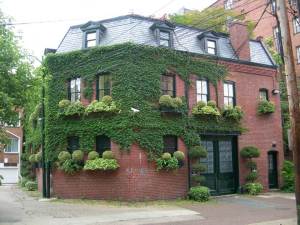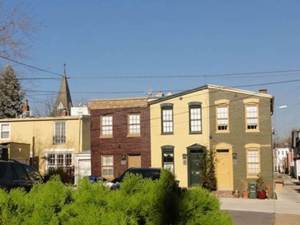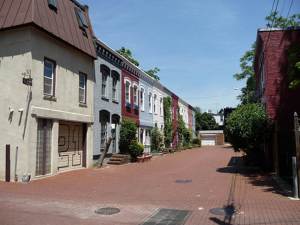Myth: The proposed changes to the zoning code will allow alleys to become the overcrowded slums of the future.
Fact: In many cities around the world, alleys are scenes of vibrant urban life. Many District residents already consider alleys an attractive location for housing, but the existing zoning code discourages additional residential development along alleys. The updated code would make residential development in alley lots a bit easier in certain zones under certain conditions.
A Long History
Although alley communities were not a part of Pierre L’Enfant’s original plan for the District, they nevertheless have a long history in the city. Newcomers in the immediate aftermath of the Civil War often could not afford land on public streets. Lots were sometimes subdivided so that less expensive residential options could be developed along alleys.

According to Kim Williams, Historic Preservation planner with OP, early alley dwellings were crude; they usually didn’t include plumbing or lighting, and were often associated with various societal ills. The alley dwelling reform movement worked to make construction of additional alley dwellings illegal. Williams says that active and vital communities formed in the alleys, “a concept which was lost on the reformers.”
Many of the original alley dwellings survive to the present day. Blagden Alley and Naylor Court show a tremendous diversity of building types which have been converted to alley dwellings, including carriage houses, stables, warehouses, and garages. Both alleys have been listed on the National Register of Historic Places since 1990.
An Attractive Option
Living in an alley dwelling, while perhaps not for everyone, can be a unique and rewarding experience. “I love living back here,” says District resident Michael Beidler about his Carriage House located in an alley near Dupont Circle. His alley residence, which he bought in 1998, is surrounded by eight story buildings. Beidler says the alley is a quiet enclave where he can both live and work. He adds that many alley buildings in the District were at one time warehouses and “make great spaces for artists and architects.”

District resident Dr. David Salter says he enjoys living in his alley residence on Naylor Court because alleys provide “a sense of a village community.” His home is a two-story building that was originally used as a livery stable for a grocer. Its other uses included a moving company warehouse, a gin-joint, a furniture factory, an artificial limb factory, and auto-repair shop for cars and limousines, a metal sculptor’s studio and home, home to a rock star, and home to an event planner. According to Dr. Salter, the stables and small buildings in the alleys have had many lives because they are simple structures easily adapted for reuse.

In addition to the potential for adaptive reuse of existing buildings, there are some other benefits to alley development. First, alley development is sustainable in that it largely utilizes existing infrastructure. Second, additional “eyes” in the alleys could potentially improve public safety. Finally, because alley dwellings tend to be relatively smaller housing stock, additional development of alley dwellings could potentially increase the supply of affordable housing.
An inclusive city means that people can make choices about how to live in the city, and different types of households have different needs. Updating the alley lot regulations is part of OP’s effort to ensure that District residents have a variety of housing choices.
If the fire chief approves the use of 20′ wide alleys as safe for residential use, why is the city requiring they be only on 30′ wide alleys?
If an historic accessory structure exceeds 450 sq.ft., can the addition of a 2nd story for residential use follow the existing, historic footprint?
OP is proposing that the alley lot must abut an improved alley twenty-four feet or more in width and have access to a street through an alley or alleys not less than twenty-four feet in width. An applicant could seek special exception relief from the twenty-four foot alley width requirement.
For a residential use on an alley lot, an existing building may not be converted for a dwelling unit unless there is a minimum of four hundred and fifty square feet of lot area. The development standards for buildings on alley lots permit a maximum height of twenty feet and two stories. Other lot occupancy, setback, and pervious surface requirements apply and are outlined in Subtitle D, Chapter 14, Section 1401.